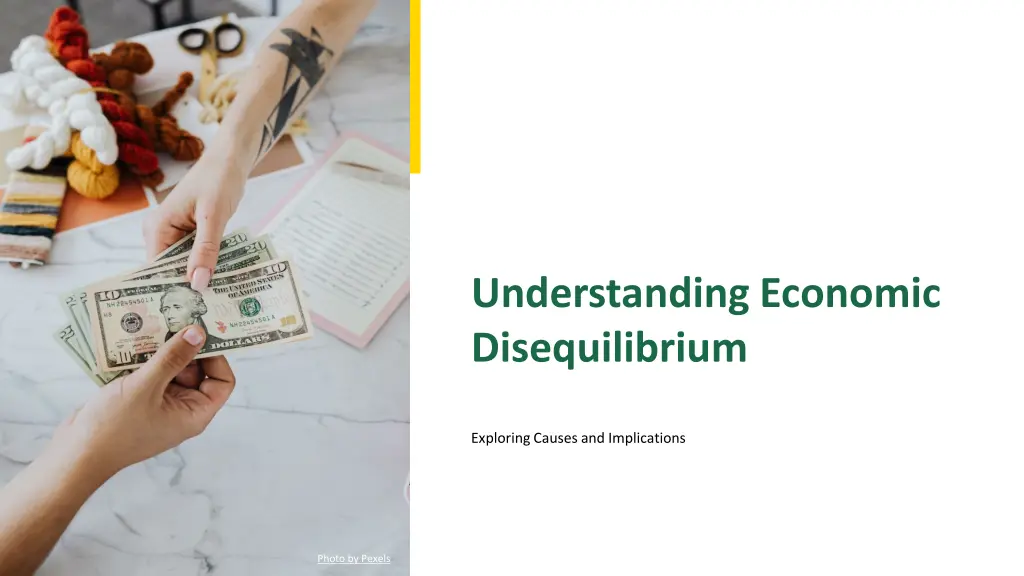
Understanding Economic Disequilibrium: Causes, Implications, and Solutions
Explore the concept of economic disequilibrium, analyzing short-term and long-term causes, implications on economic and social aspects, and strategies for addressing it. Gain insights into market dynamics and the effects of imbalances on resource allocation, inflation, unemployment, and social equality.
Uploaded on | 4 Views
Download Presentation

Please find below an Image/Link to download the presentation.
The content on the website is provided AS IS for your information and personal use only. It may not be sold, licensed, or shared on other websites without obtaining consent from the author. If you encounter any issues during the download, it is possible that the publisher has removed the file from their server.
You are allowed to download the files provided on this website for personal or commercial use, subject to the condition that they are used lawfully. All files are the property of their respective owners.
The content on the website is provided AS IS for your information and personal use only. It may not be sold, licensed, or shared on other websites without obtaining consent from the author.
E N D
Presentation Transcript
Understanding Economic Disequilibrium Exploring Causes and Implications Photo by Pexels
01 Introduction to Disequilibrium Table of Contents 02 Short-term Causes 03 Long-term Causes 04 Implications of Disequilibrium 05 Addressing Disequilibrium
1 Introduction to Disequilibrium Defining the Concept Disequilibrium occurs when market supply and demand are out of balance, leading to inefficiencies. Understanding disequilibrium helps in analyzing market dynamics and economic health. Disequilibrium can be temporary or persistent, affecting economic stability differently. Changes in variables like price, demand, and supply can lead to disequilibrium. Photo by Pexels
2 Short-term Causes Temporary Imbalances Sudden changes in prices can disrupt market equilibrium temporarily. Unexpected changes in consumer demand can lead to short- term disequilibrium. Interruptions in supply chains can cause temporary imbalances in the market. Government interventions can lead to short-term disequilibrium. Photo by Pexels
3 Long-term Causes Structural Imbalances Advancements can lead to long-term shifts in market dynamics. Changes in population structure can cause persistent disequilibrium. Integration of global markets can lead to structural imbalances. Long-term scarcity of resources can cause disequilibrium. Photo by Pexels
4 Implications of Disequilibrium Economic and Social Effects Disequilibrium can lead to inefficient resource allocation. Persistent imbalances can cause inflationary or deflationary pressures. Structural disequilibrium can lead to job losses and unemployment. Economic imbalances can exacerbate social inequality. Photo by Pexels
5 Addressing Disequilibrium Strategies and Solutions Governments can use policies to correct market imbalances. Adapting to technological changes can help restore equilibrium. Promoting sustainability can address resource-related disequilibrium. International collaboration can help manage globalization effects. Photo by Pexels
